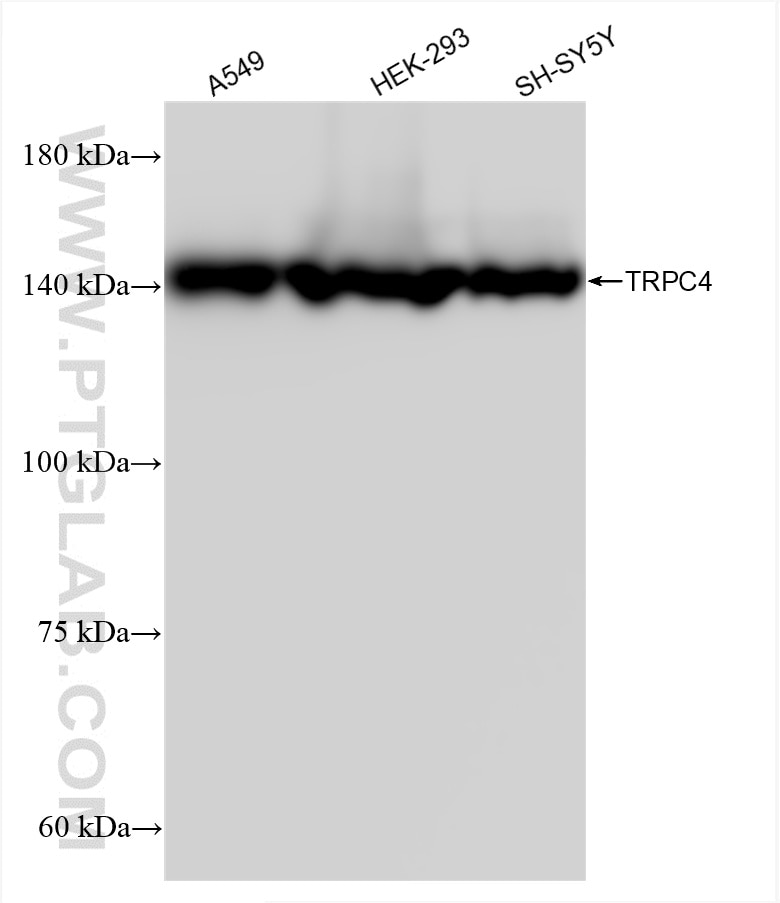Product Information
85334-2-PBS targets TRPC4 in WB, Indirect ELISA applications and shows reactivity with human samples.
| Tested Reactivity | human |
| Host / Isotype | Rabbit / IgG |
| Class | Recombinant |
| Type | Antibody |
| Immunogen |
CatNo: Ag15698 Product name: Recombinant human TRPC4 protein Source: e coli.-derived, PGEX-4T Tag: GST Domain: 746-977 aa of BC104725 Sequence: FRFEVLGLLRGSKLSTIQSANASKESSNSADSDEKSDSEGNSKDKKKNFSLFDLTTLIHPRSAAIASERHNISNGSALVVQEPPREKQRKVNFVTDIKNFGLFHRRSKQNAAEQNANQIFSVSEEVARQQAAGPLERNIQLESRGLASRGDLSIPGLSEQCVLVDHRERNTDTLGLQVGKRVCPFKSEKVVVEDTVPIIPKEKHAKEEDSSIDYDLNLPDTVTHEDYVTTRL Predict reactive species |
| Full Name | transient receptor potential cation channel, subfamily C, member 4 |
| Calculated Molecular Weight | 977 aa, 112 kDa |
| Observed Molecular Weight | 140 kDa |
| GenBank Accession Number | BC104725 |
| Gene Symbol | TRPC4 |
| Gene ID (NCBI) | 7223 |
| Conjugate | Unconjugated |
| Form | Liquid |
| Purification Method | Protein A purification |
| UNIPROT ID | Q9UBN4 |
| Storage Buffer | PBS only, pH 7.3. |
| Storage Conditions | Store at -80°C. |
Background Information
TRPC4 (Transient Receptor Potential Paradigm 4) is a non-selective calcium channel protein widely found in the nervous system and cardiovascular system. TRPC4 regulates intracellular calcium levels through the activation of signaling pathways mediated by Gq/11 and Gi/o-coupled receptors, and is involved in neurotransmission, neuronal excitability, and vascular endothelial cell function. In the nervous system, TRPC4 is associated with neuropsychiatric disorders such as depression and anxiety, and its inhibitors show antidepressant and anxiolytic potential. In the cardiovascular system, TRPC4 affects vascular permeability and diastolic function by regulating calcium ion inward flow and plays an important role in hypoxia-induced pulmonary hypertension. In addition, TRPC4 is involved in thermoregulation, sensing changes in internal temperature to regulate the drop in body temperature. aberrant expression of TRPC4 is associated with a variety of diseases, making it a potential therapeutic target!




